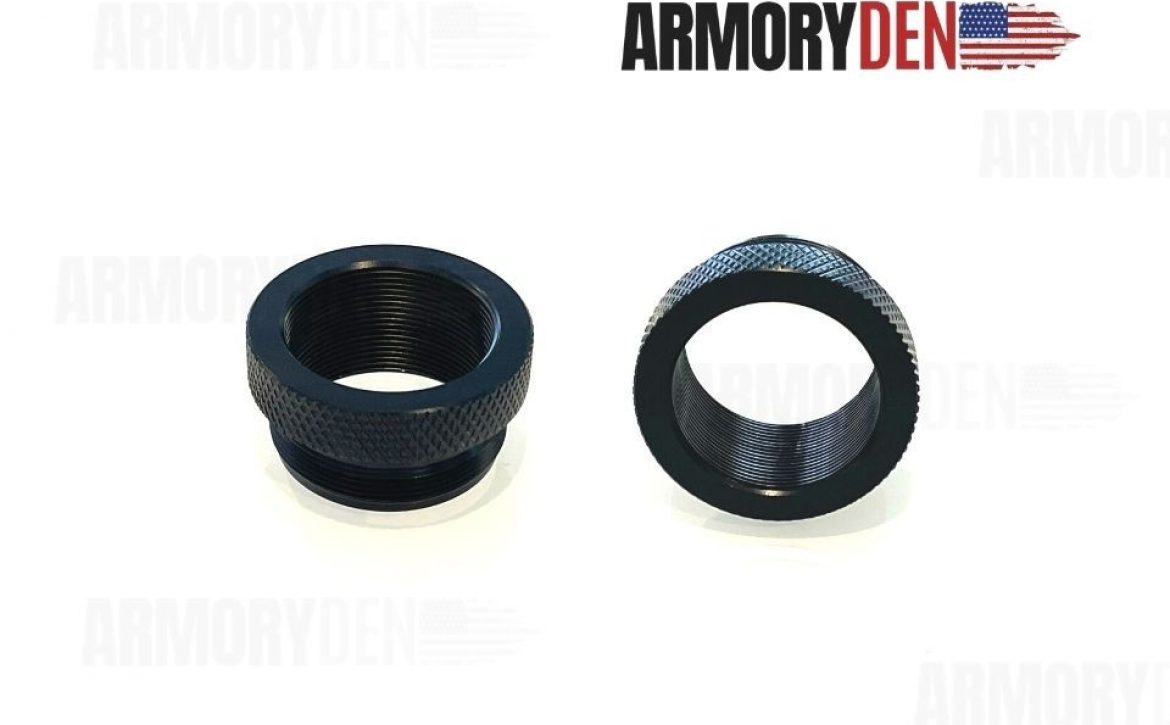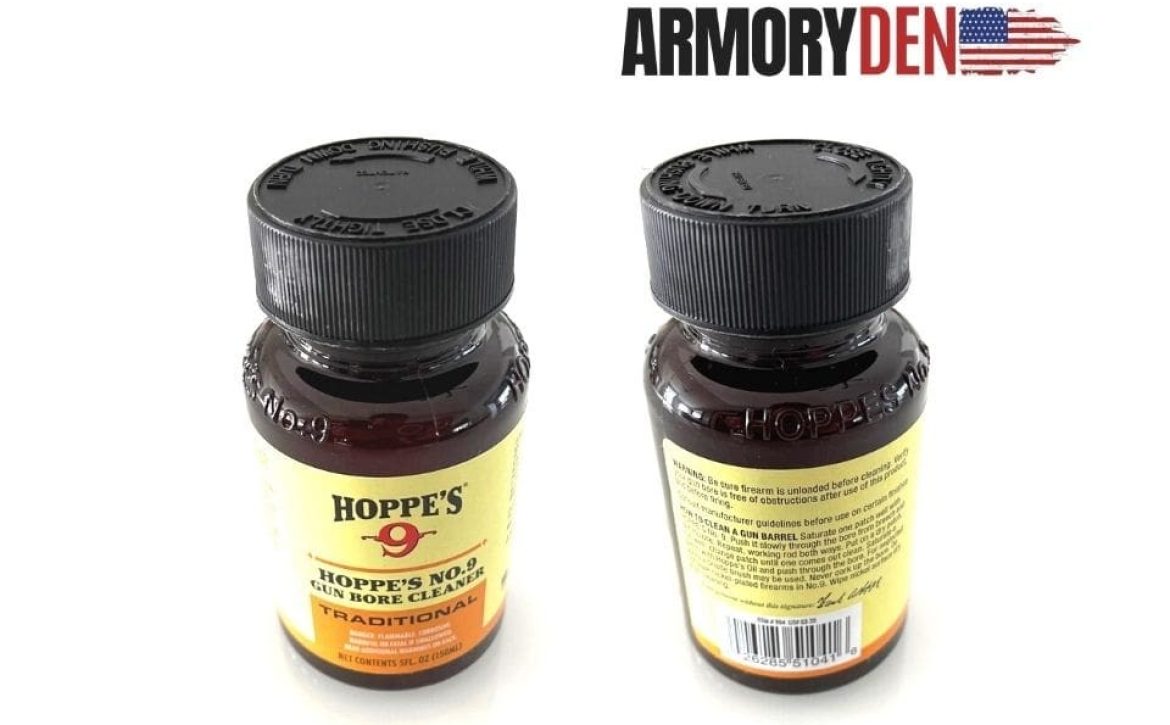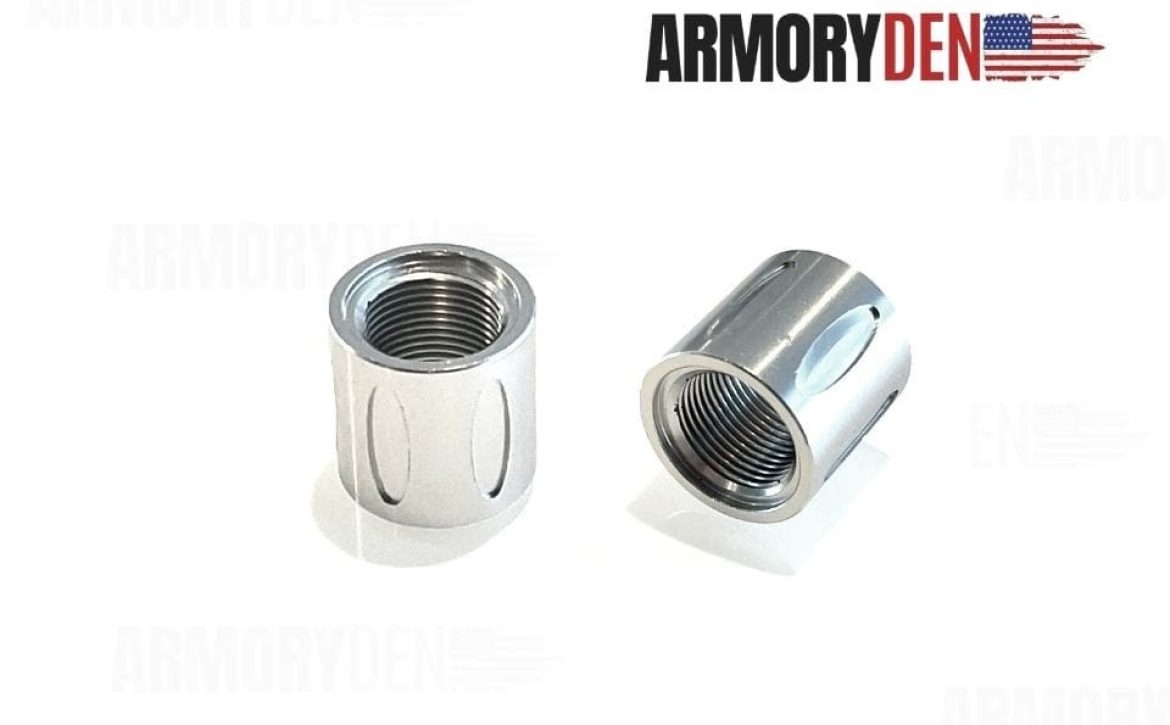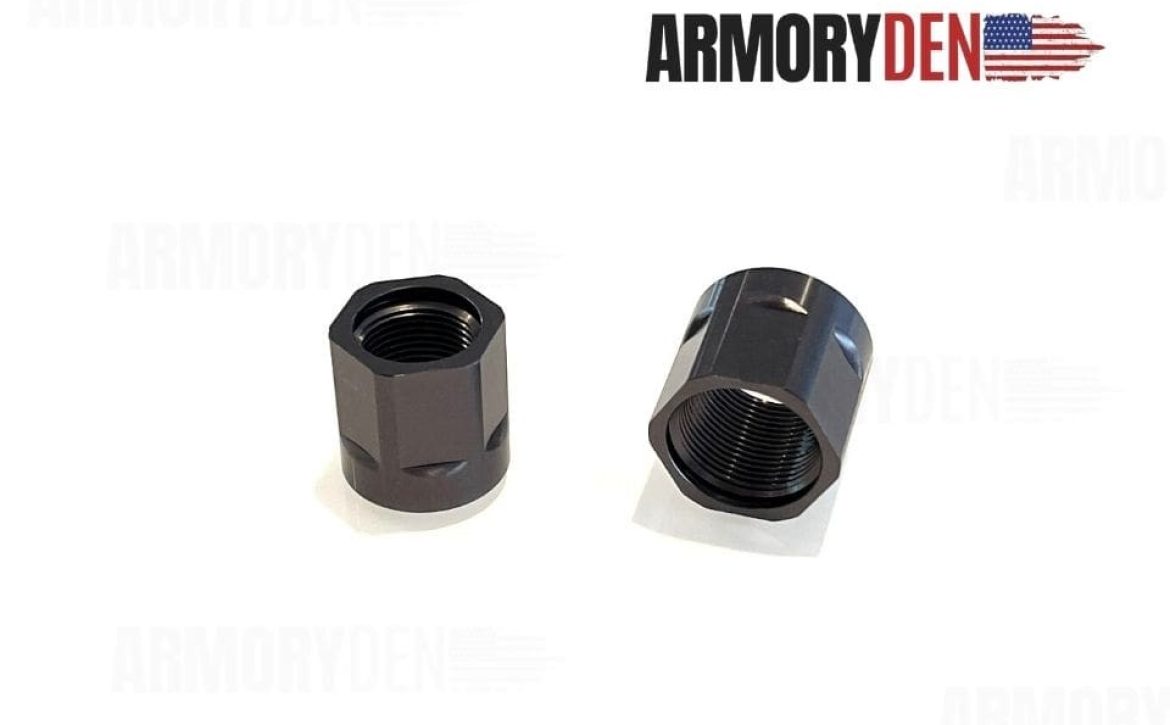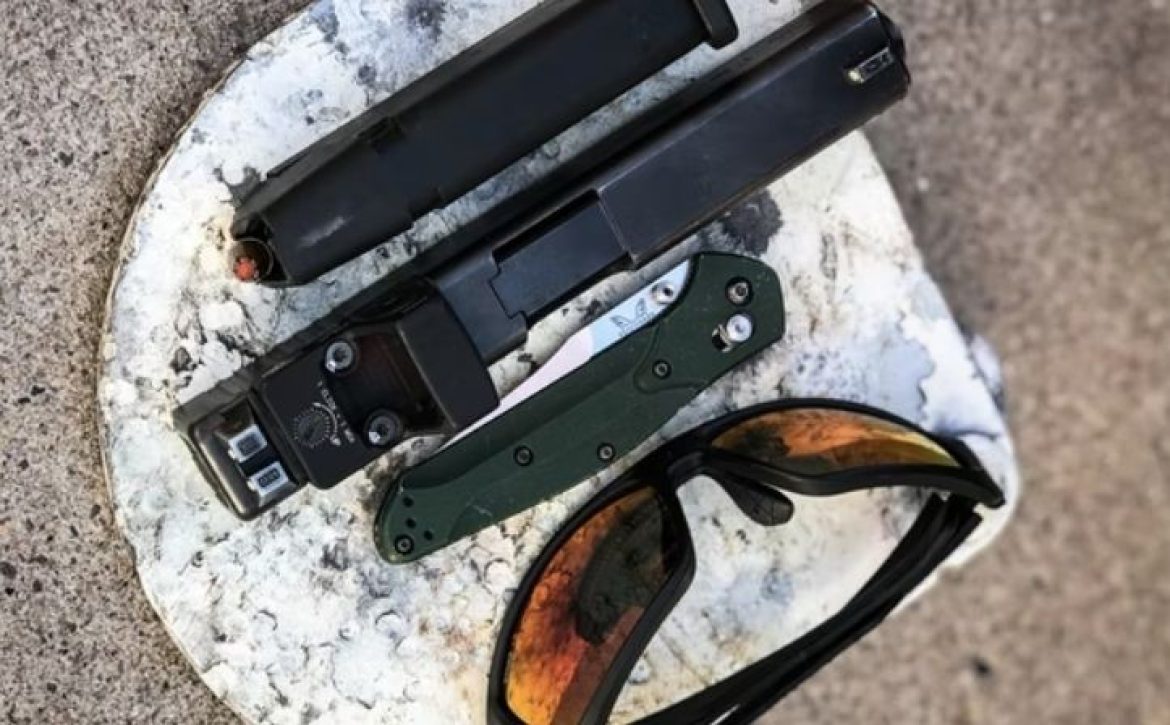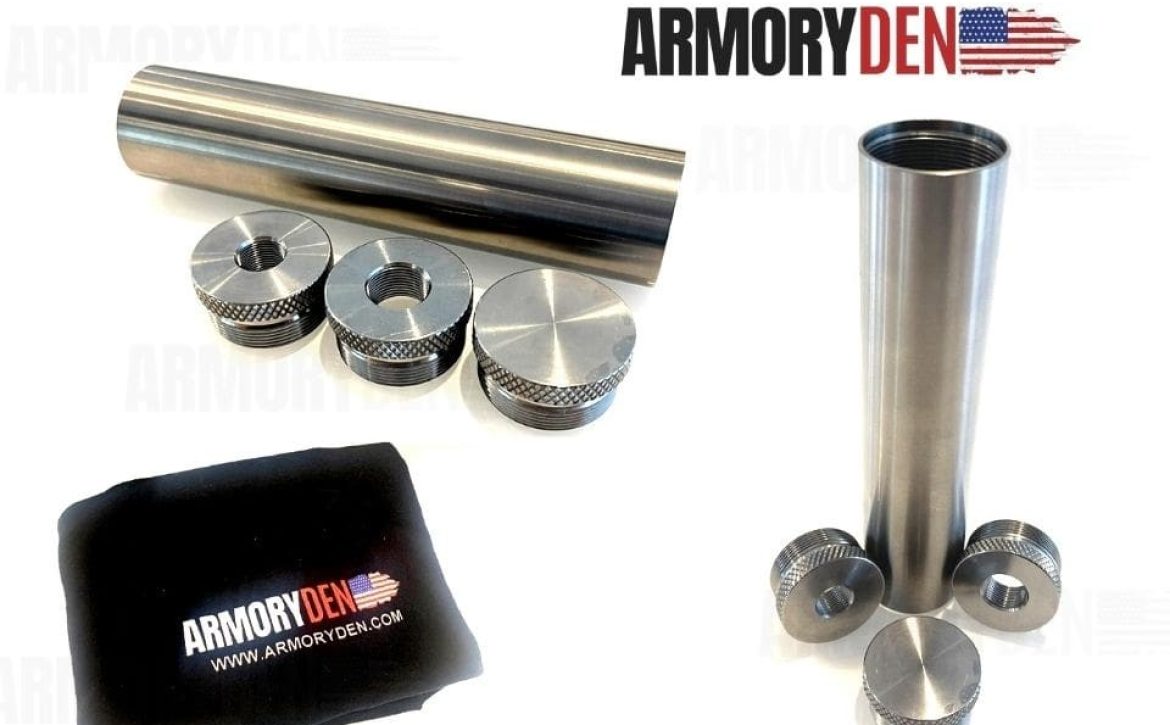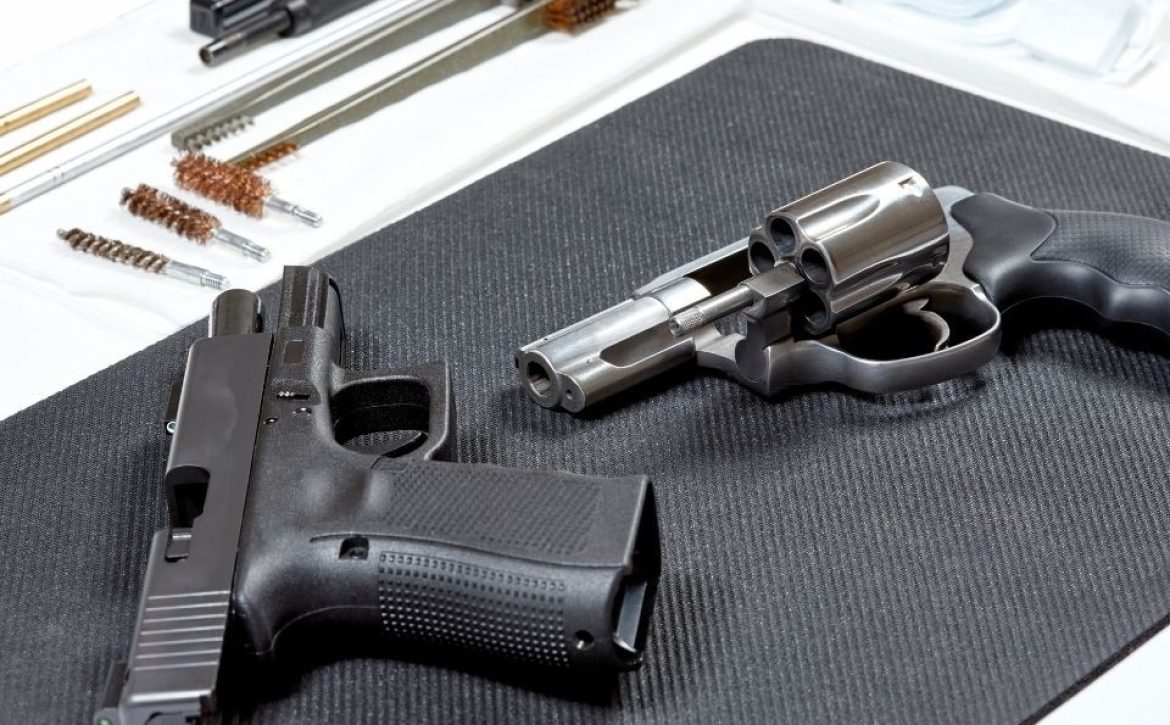Armory Den’s Top Selections in Aircraft Aluminum-Based Thread Adapters
One of the major challenges people face when buying firearm accessories is incorrect thread pitch. This challenge stems from firearm barrels having varying thread pitch sizes, which need to match with any accessory attached to its threaded end.
The list of accessories that fall under this category includes solvent traps, which are invaluable for cleaning and maintaining any firearm. However, like most firearm accessories, solvent traps also come in varying thread pitches, which might not fit with the thread pitch of your firearm.
If you’ve ever bought a solvent trap with an incorrect thread pitch for your firearm, you can salvage the situation using a solvent trap adapter, otherwise known as a thread adapter. This will help correct the discrepancy in thread sizes and enable you to use your solvent trap for its intended purpose without purchasing a new one.
So, what exactly is a thread adapter? This guide will explain what a thread adapter is, showcase some of the best thread adapters from top brands like Armory Den, and give you tips on purchasing a thread adapter for your firearm.
A thread adapter is a small cylindrical device used to adapt the thread of one device so that it can be compatible with the thread of another device. In most cases, these adapters are used so that an accessory with a larger thread pitch can be attached to a firearm with a smaller thread pitch.
For example, a thread adapter can be used to attach a 5/8″ x 24 solvent trap to a 1/2″ x 28 firearm thread. This is achieved by screwing the adapter onto the solvent trap and then screwing the assembly onto the firearm.
Most firearms come with an instruction manual that contains all the information you need to know about the thread pitch of your firearm. This will come in handy when shopping for a thread adapter, as you’ll be able to find an adapter with a thread size that perfectly matches that of your firearm.
When appropriately fixed, solvent trap adapters ensure that the cleaning solvent passes seamlessly without leakage from the firearm’s barrel through the solvent trap tube and into the storage cup. This makes it a vital accessory when purchasing and using solvent traps with thread pitch sizes that differ from your firearm’s thread pitch.
Armory Den offers a variety of solvent trap adapters with variable thread pitch sizes that can fit the barrel of your firearm comfortably. Our thread adapters are crafted with high precision tools and made from high-grade 7075 Aircraft Aluminum material that raises the industry bar for all other manufacturers.
Now that you know what a thread adapter is, we’ll look at some of the best aircraft aluminum-based thread adapters from top brands like Armory Den.
- AD-EX D-Cell Muzzle Adapter 1.375-24 TPI (Male) to 1.1875-24 TPI (Female) – If you’re looking for a top-quality thread adapter that’s made using aircraft-grade aluminum, look no further than the AD-EX D-Cell Solvent Trap Adapter. This particular model is designed for use with our 7″ AD-EX Aircraft Aluminum Solvent Trap Kit with a thread pitch of 1.375-24″. The AD-EX D-cell Solvent Trap Adapter is precision machined to ensure a perfect fit. In addition, it features a type 3 hard anodized finish that gives it a sleek look. This adapter is also relatively easy to install as it doesn’t require any modification to your solvent trap or firearm.
- Muzzle Device Adapter 1.375-24 TPI (Male) to 1.1875-24 TPI (Female) – The muzzle device adapter is very similar to the first solvent trap adapter we just looked at, except that it is only compatible with our 1.57″ solvent trap kits.Like the AD-EX D Cell muzzle adapter, this solvent trap adapter has an outer thread of 1.375-24 TPI and an inner thread of 1.1875-24 TPI that allows for seamless installation and removal of solvent traps. It is made from high-grade 7075 aircraft aluminum material with a black anodized finish to ensure its durability. So if you’re looking for a high-quality aircraft aluminum-based thread adapter and have one of our 1.57″ solvent trap kits, this one is definitely worth considering.
- AD Space Connector 1.375-24 TPI (Male to Male) – The AD Space Connector 1.375-24 TPI is another excellent choice for anyone in the market for a top-quality thread adapter. This solvent trap space connector has a male-to-male end that allows you to extend the length of your solvent trap kit.It comes together with the AD4C adaptive solvent trap kit along with 4 storage cups for simultaneous cleaning and storage for firearm cleaning solvent. What makes this particular thread adapter stand out is that it enables the user to connect multiple storage cups to the solvent trap kit, thereby creating extra space that can come in handy when transporting cleaning accessories like bore brushes. Furthermore, the solvent trap adapter also has a type 3 hard anodized finish with an extra titanium polishing that can stand the test of time. This ensures that your thread adapter lasts long if used according to the manufacturer’s instructions. As an added bonus, the AD space connector is compatible with 1.57″ and 1.55″ OD adaptive solvent kits, giving you a wider use case than other solvent trap adapters.
- Muzzle Device Adapter For 9″ Aluminum (1.375-24 TPI) 7075 Solvent Trap (1.375-24 TPI to 1.1875-24 TPI) – Last but not least, we have the muzzle device adapter for 9″ aluminum solvent trap kits which is another top-quality thread adapter that’s worth considering. This premium solvent trap adapter is designed for use with the 9″ Aluminum 7075 (1.375-24 TPI) Solvent Trap Kit, and it’s made using high-strength aircraft aluminum. The muzzle device adapter features a black oxide finish that gives it a classy, professional look. It also has an ergonomic design that promotes easy installation and removal of solvent traps without using a vice or AR wrench.
If you’re looking to buy a thread adapter for your firearm, there are a few things you’ll need to keep in mind. First and foremost, you must ensure that the adapter you choose is compatible with your particular firearm.
For example, if you have a 5/8″ x 24 threaded barrel, you’ll need to ensure that the adapter you choose is also designed for use with 5/8″ x 24 threaded barrels.
In addition, you’ll also need to make sure that the adapter you choose is made using high-quality materials. For example, as we mentioned earlier, our thread adapters at Armory Den are made using high-strength aircraft aluminum material.
Many companies manufacture thread adapters, but Armory Den prides itself on having the best quality products on the market. Here are some of the features that make our products stand out:
- Aircraft-grade aluminum – for durability and strength
- Anodized finish – for a smooth, wear-resistant surface
- Precision machined – for a perfect fit
As you can see, there are plenty of great solvent trap adapters to choose from. These adapters are all made using high-strength aircraft aluminum and feature a black oxide finish that promotes strength and durability.
Our aircraft aluminum-based thread adapters are available in various sizes to fit any barrel thread pitch. We have the perfect product for you whether you need an adapter for your 9mm pistol or AR-15 rifle.
Plus, these adapters are also quite easy to install as they don’t require any modification to your firearm. So, if you’re in the market for a top-quality thread adapter, be sure to check out some of the options on this list. You can also browse through the DEN shop to find an adapter that perfectly meets your needs and preferences.


